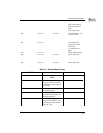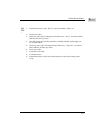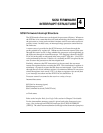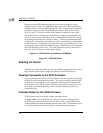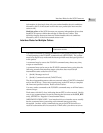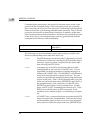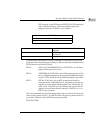
4
SCSI FIRMWARE
INTERRUPT STRUCTURE
SCSI Firmware Interrupt Structure
The SCSI interface firmware was designed for processor efficiency. Whenever
the SCSI bus is in a state that does not need monitoring, the firmware releases
the processor so it may perform other functions such as user tasks and lower
priority events. In these cases, an interrupt brings processor control back to
the firmware.
A return vector is provided to the SCSI firmware in all cases through the
packet pointed to by register A2. Whenever the firmware returns to the user
through this return vector, it flags whether the processor was brought back to
the firmware through an external interrupt. This flagging is done by the RTE
FLAG bit in the status word stored in the user packet. If the bit = 1, no RTE is
to be performed by the user. If the bit = 0, eventually an RTE is required by the
user to return the processor to the interrupted task.
Similarly, whenever the RTE instruction is to be executed, the user must
restore the registers before executing the RTE. This restoration of registers is
mandatory to properly restore the task that was interrupted. Upon a return
through the user vector, address register A3 contains an address of a save area
where the registers were saved. If A3 = 0, then no registers were saved (that
is, no interrupt was taken and the RTE FLAG bit should be a 1).
Processor control is returned to the user in a variety of ways:
Intermediate status:
$02 Wait for interrupt (open)
$04 Message received
$06 Command received (TARGET role)
or Final status.
Refer to the Interface Rules for a Single Caller section in Chapter 5 for details.
For the intermediate statuses, control is given back to the firmware in two
ways. One is through an WD33C93 interrupt (WAIT FOR INTERRUPT
(OPEN)). The other return mechanism is through a direct branch or jump into



